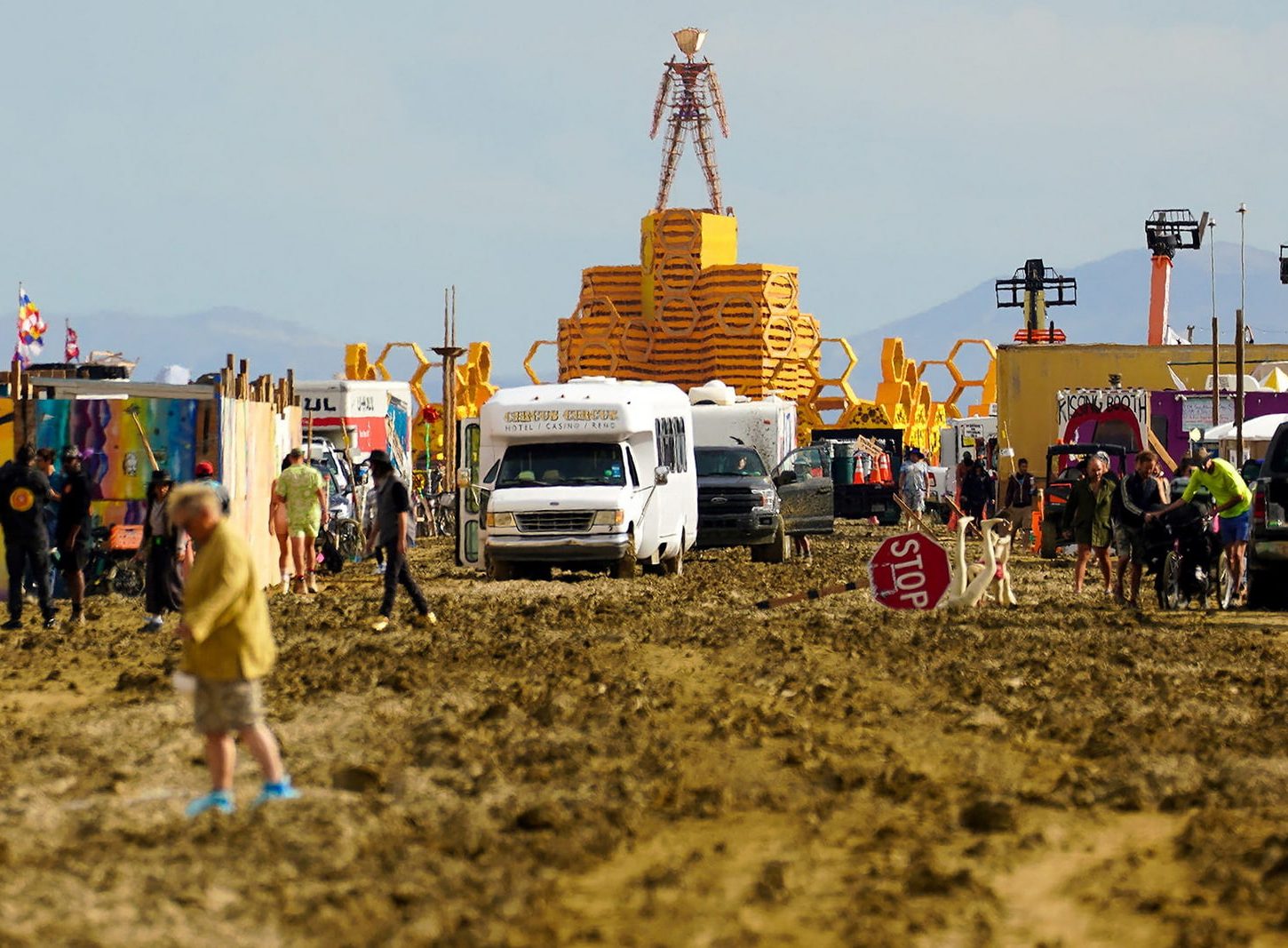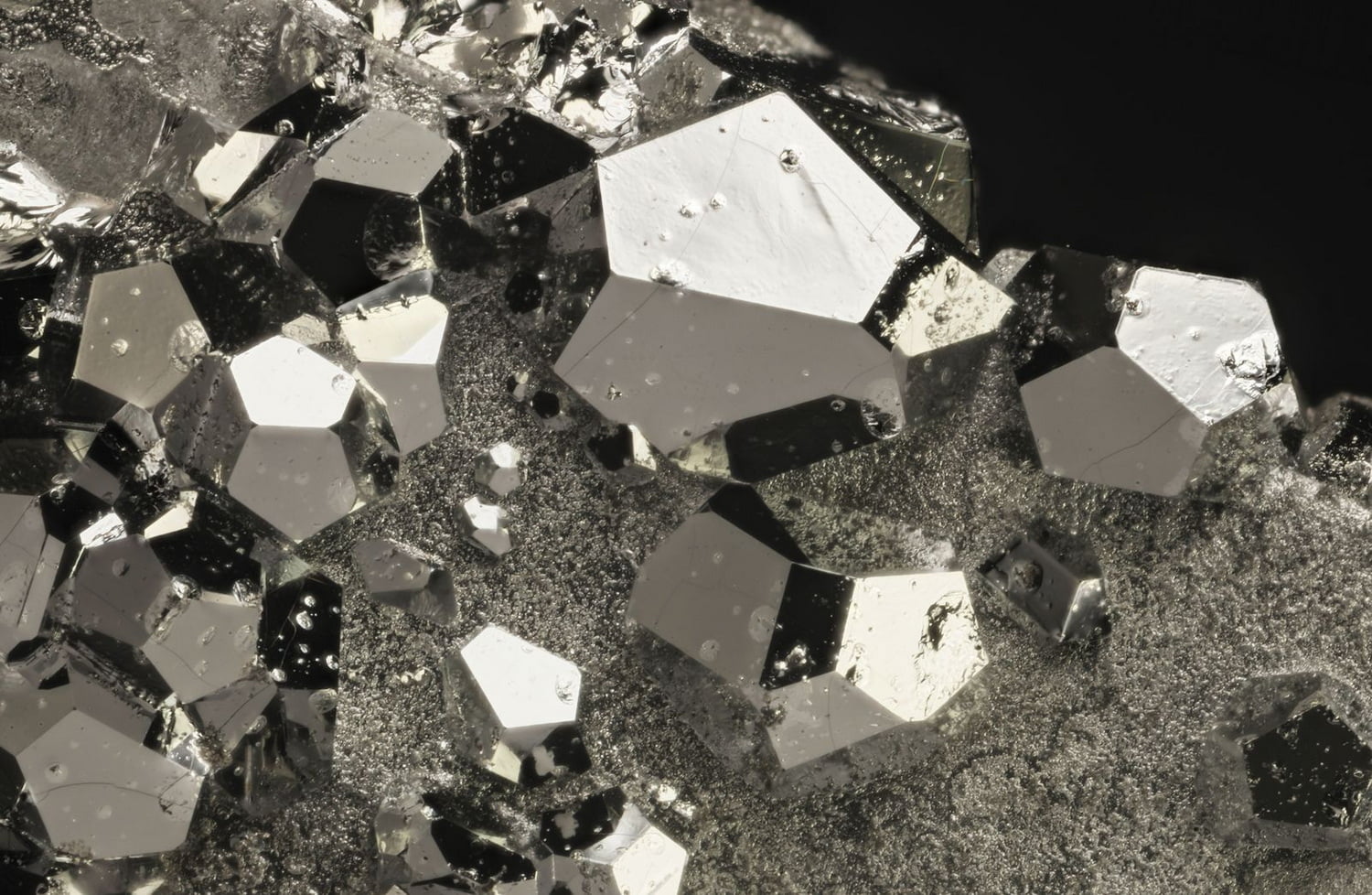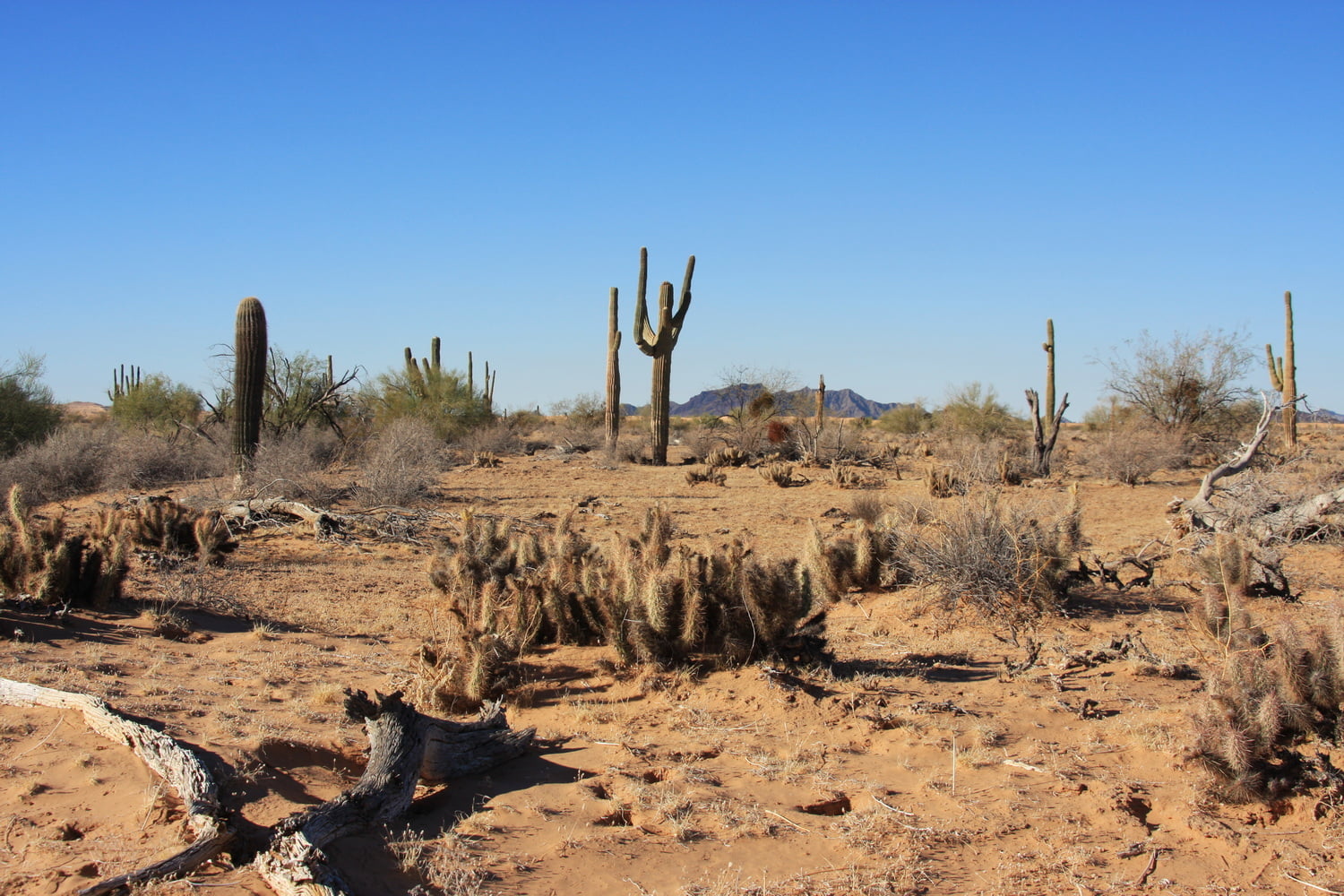Every year, nearly 80,000 people gather in Nevada’s Black Rock Desert to build a massive, temporary city from scratch. Burning Man is more than an event—it’s a radical experiment in art, self-expression, and community. There’s no money, only gifting. Giant sculptures rise from the desert, only to be burned days later. Dust storms can strike at any moment, yet attendees embrace the challenge. Even a functioning airport appears for a single week. From its humble beginnings on a San Francisco beach to its global influence today, here are some fun facts about Burning Man enthusiasts should know.
1. Humble Beginnings
Burning Man started in 1986 as a small gathering on San Francisco’s Baker Beach. Larry Harvey and Jerry James built and burned an 8-foot wooden effigy, attracting a handful of curious onlookers. What began as a spontaneous act of self-expression quickly grew into an annual event.
By 1990, authorities prohibited fires on the beach, forcing the gathering to move to Nevada’s Black Rock Desert. This shift transformed Burning Man into something much bigger—a temporary city built entirely by its participants.
2. Rapid Growth
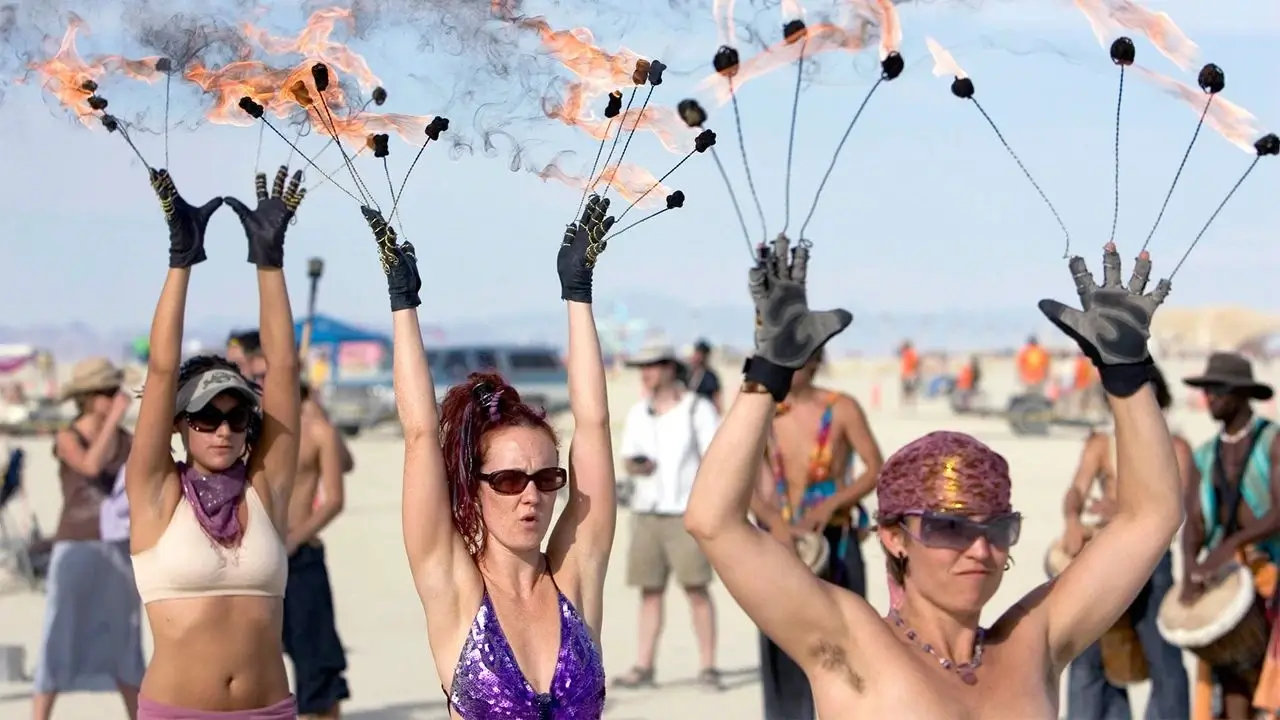
Image: bbc.com
From just 20 attendees in its first year to nearly 80,000 today, Burning Man has experienced explosive growth. The move to Black Rock Desert allowed for large-scale artistic creations and an increasingly complex infrastructure. By the early 2000s, the event had developed into a fully functional city with street grids, emergency services, and even a temporary airport.
Despite this expansion, Burning Man maintains its unique, community-driven ethos, with each participant contributing to the event’s survival and success.
3. The Ten Principles
Burning Man operates on ten guiding principles that shape its culture. These include radical inclusion (everyone is welcome), gifting (no commercial transactions), decommodification (no corporate sponsorships), and radical self-reliance (attendees must bring everything they need to survive).
Other principles, such as leaving no trace, ensure the desert is restored to its original state after the event. These principles create an environment where creativity thrives, and participants take full responsibility for their experience.
4. Artistic Showcase
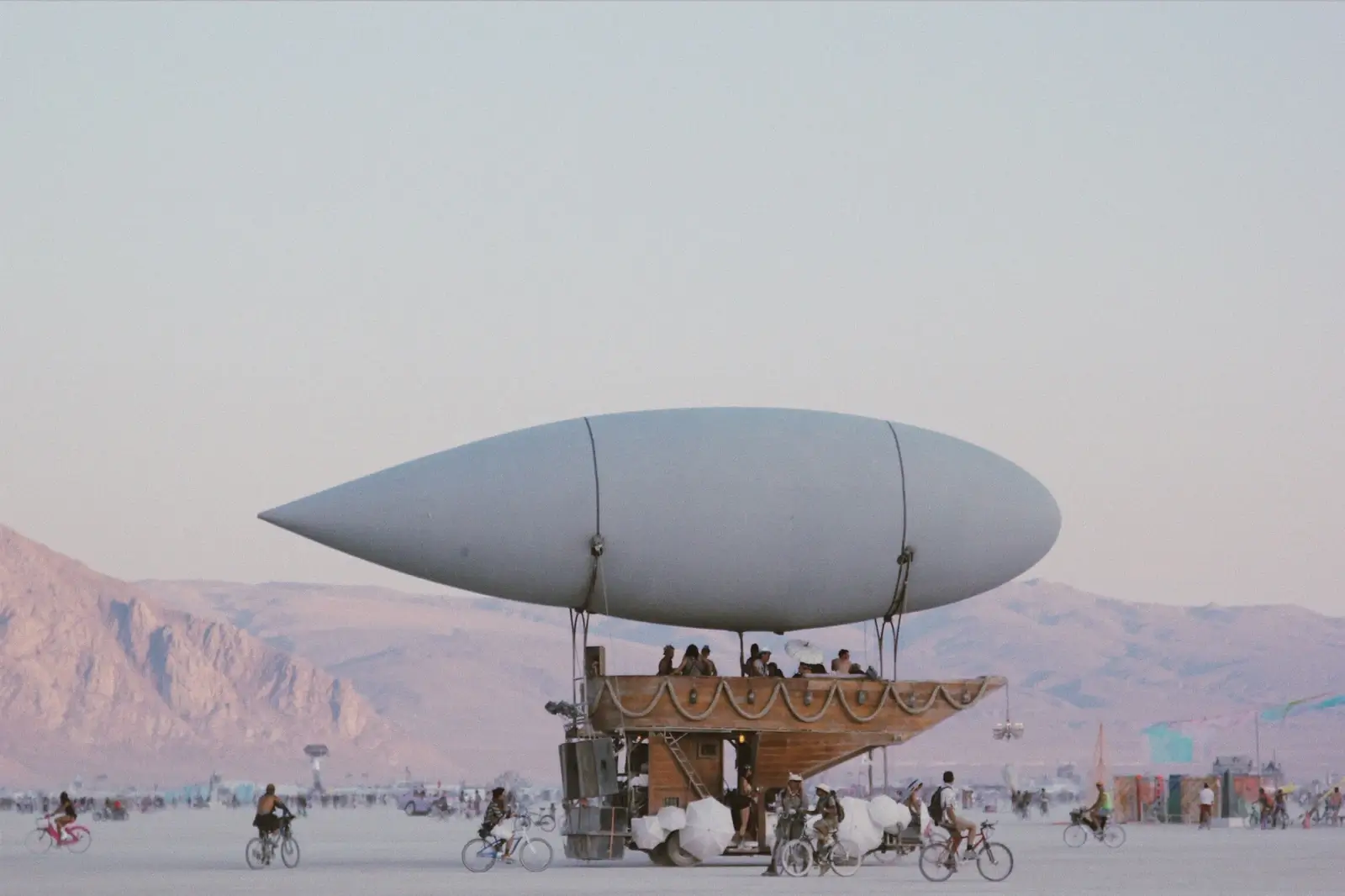
Image: xibtmagazine.com
Burning Man is a giant outdoor gallery where artists showcase mind-blowing installations, many of which are interactive. Gigantic sculptures, glowing neon temples, and fire-breathing mutant vehicles fill the desert landscape. The centerpiece is “The Man,” a massive wooden effigy burned on the final Saturday night.
Many of these creations take months to design and construct, only to be destroyed in a dramatic blaze. The impermanence of the artwork is a core part of Burning Man’s philosophy—nothing lasts forever.
5. Theme Camps and Villages
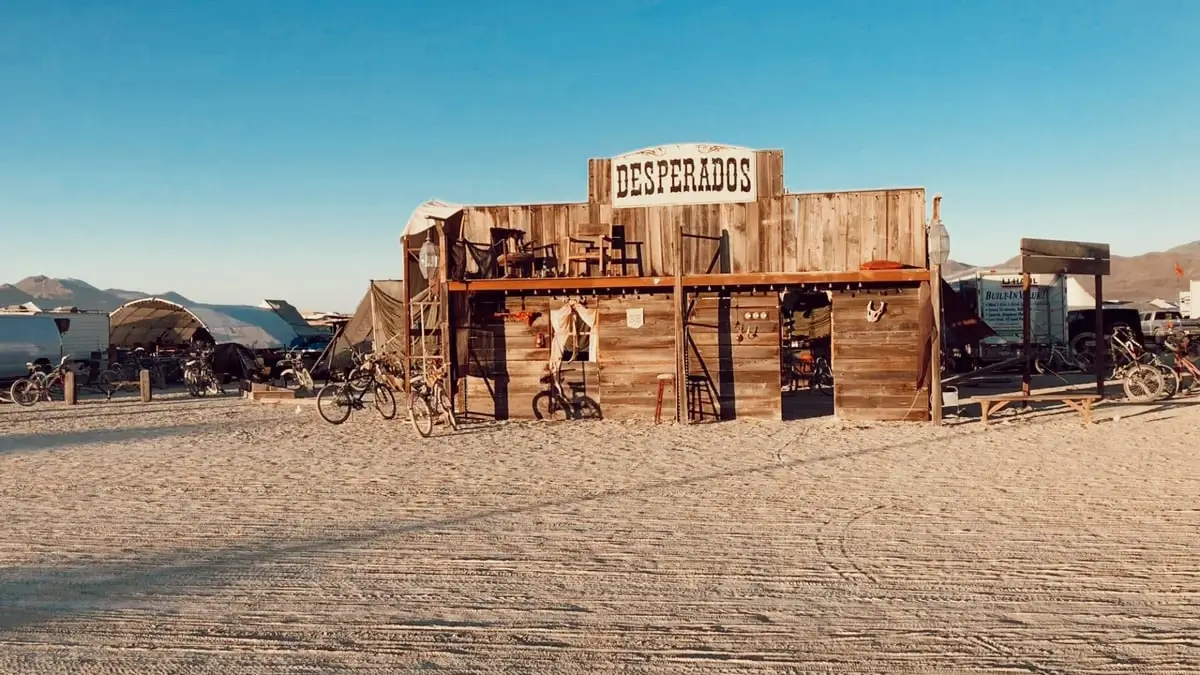
Image: bizevdeyokuz.com
Attendees don’t just set up tents—they create fully realized theme camps and villages. These camps offer experiences ranging from dance floors and art workshops to meditation spaces and makeshift restaurants. Some, like the legendary “Robot Heart,” host world-class DJs, while others focus on education, wellness, or comedy.
With thousands of camps, Burning Man is like a city where every block offers something unique. Participants are encouraged to contribute, whether by providing food, entertainment, or simply helping others navigate the desert.
6. No Commerce Allowed
Unlike traditional festivals, Burning Man has no vendors, advertisements, or commercial transactions. The only things for sale are coffee and ice, with proceeds benefiting local communities. Everything else operates on a gifting economy, where participants freely share goods and services without expecting anything in return.
This decommodification principle removes financial barriers and fosters a culture of generosity, creativity, and self-sufficiency.
7. Temporary Airport
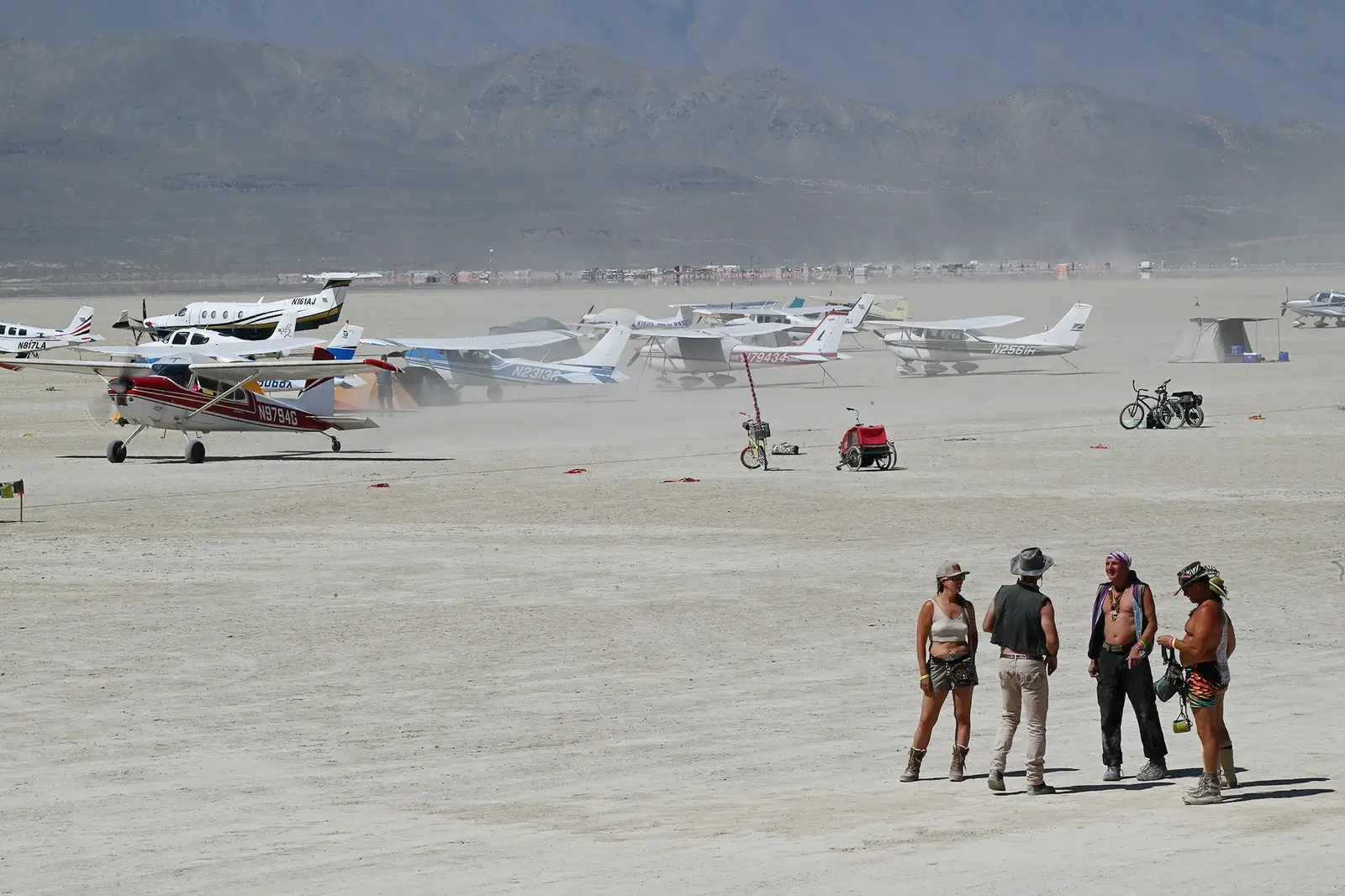
Image: sfgate.com
For one week a year, Black Rock City has its own fully operational airport, Black Rock City Municipal Airport (88NV). This makeshift hub handles hundreds of flights, with small planes and private charters bringing in participants and supplies.
The airport follows strict regulations, including controlled airspace and a mandatory briefing for pilots. Like everything at Burning Man, it disappears without a trace once the event ends.
8. Environmental Challenges
The Black Rock Desert is one of the harshest environments on Earth. Temperatures can exceed 100°F (38°C) by day and drop below freezing at night. Sudden whiteout dust storms can reduce visibility to near zero, making navigation nearly impossible. There is no running water or permanent shelter, so participants must bring everything they need to survive.
These extreme conditions test self-reliance and add to the event’s unpredictable, raw nature.
9. Leave No Trace
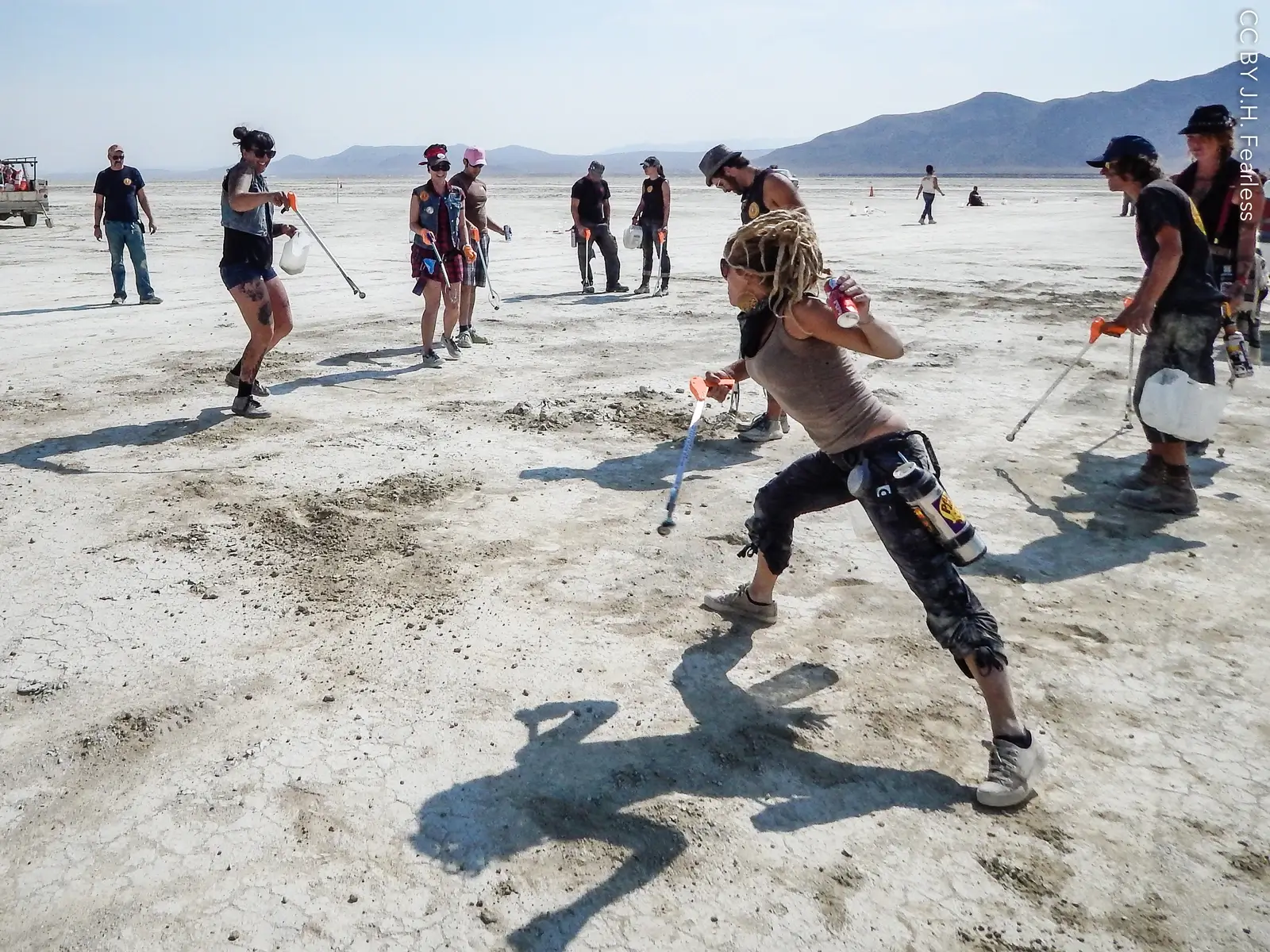
Image: Wikimedia Commons
Burning Man follows a strict Leave No Trace (LNT) policy, meaning attendees must pack out everything they bring. Volunteers meticulously clean the desert after the event, ensuring that no trash, art, or structures remain. Even micro-trash—tiny debris like glitter or cigarette butts—is carefully removed.
This commitment to environmental responsibility ensures the playa remains pristine year after year.
10. Global Influence
Burning Man’s ethos has inspired events worldwide, known as Regional Burns. These independent gatherings, from AfrikaBurn in South Africa to Nowhere in Spain, embrace the same principles of radical self-expression and communal effort.
The event’s culture has also influenced Silicon Valley, with tech leaders like Elon Musk and Jeff Bezos among its attendees. Many credit Burning Man’s collaborative spirit with shaping startup innovation and modern workplace culture.
11. Unique Architecture
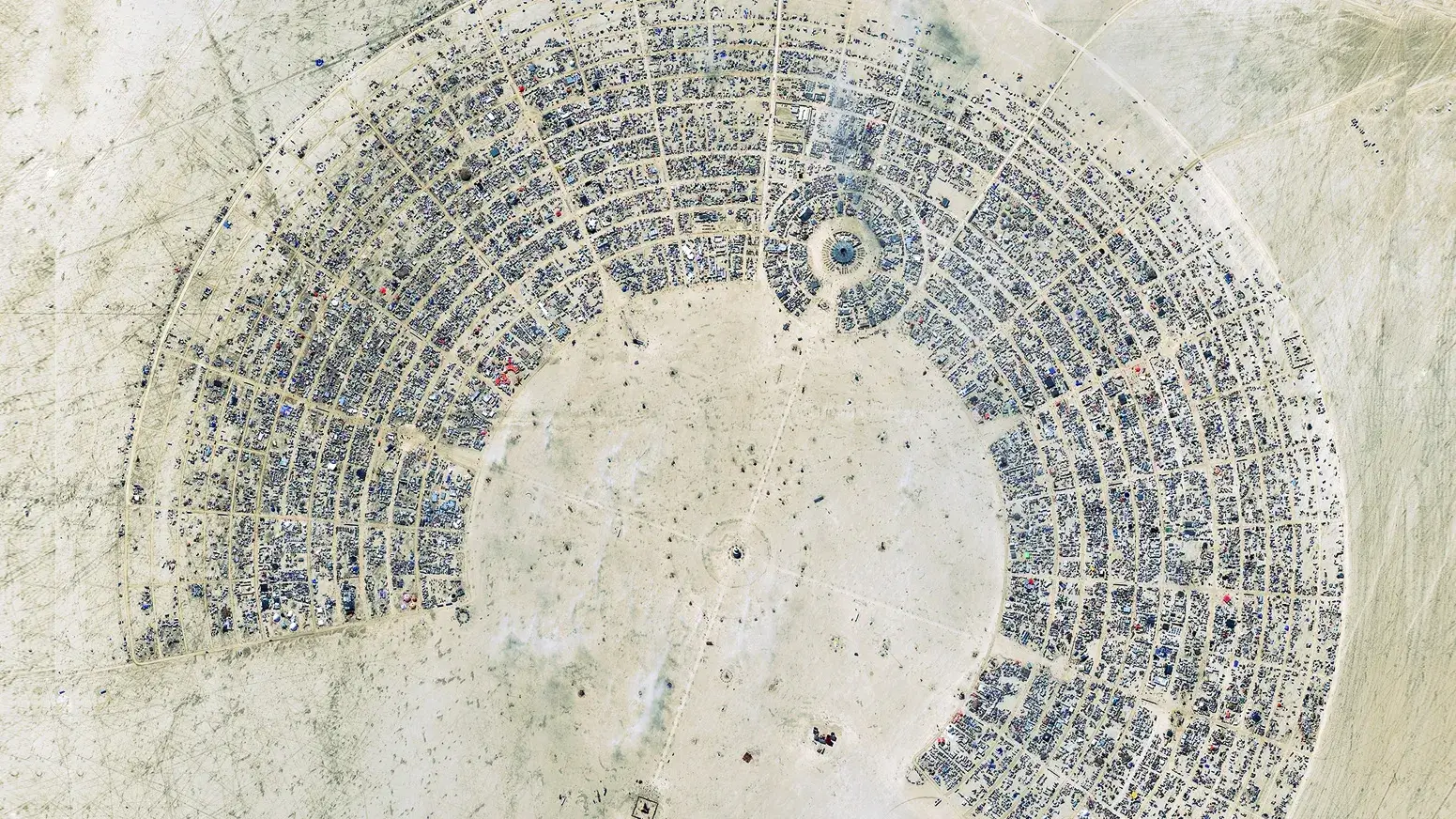
Black Rock City. Image: wired.com
Black Rock City is designed in a circular layout, resembling a clock face. At its center stands The Man, surrounded by wide, radial streets and themed districts. The city’s layout encourages exploration while ensuring accessibility and organization.
Major landmarks, such as the Temple, serve as spiritual gathering places where participants leave messages, tributes, and personal reflections before they are ceremoniously burned.
12. Cultural Phenomenon
Burning Man is more than an event—it’s a cultural movement. Over the years, it has attracted artists, musicians, engineers, and visionaries, each contributing to its ever-evolving identity. What started as a small bonfire has become a global symbol of radical creativity and human connection.
Whether through massive art installations, self-sustaining communities, or its influence on modern tech and design, Burning Man continues to shape and challenge the way people think about society, art, and self-expression.


